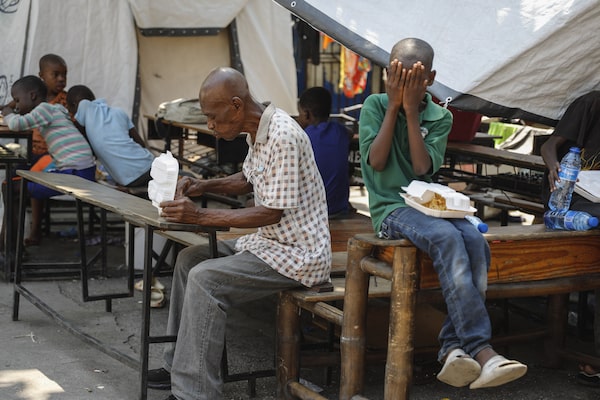New approach needed to save Australia’s non-perennial rivers
FLINDERS UNIVERSITY
Non-perennial rivers, which stop flowing at some point each year, dominate surface water movement across Australia, yet monitoring the continued health of these vital waterways demands a new type of research attention.
More than 70% of this nation’s rivers are non-perennial due to a combination of ancient landscape, dry climates, highly variable rainfall regimes, and human interventions that have altered riverine environments.
An extensive review of current research incorporating geomorphology, hydrology, biogeochemistry, ecology and Indigenous knowledges identifies prevailing factors that shape water and energy flows in Australia’s non-perennial rivers – but the review also points to research deficiencies that must be addressed if these river systems are to be preserved and protected.
“Australia relies on our rivers, and has a strong history of research to understand river flows and ecosystems and the human impacts on them. Now, we must address emerging threats to river systems due to climate change and other anthropogenic impacts,” says lead author of the review, Dr Margaret Shanafield, from Flinders University’s College of Science and Engineering.
“We have to work together to tackle emerging threats to our rivers. If we are going to plug gaps in existing knowledge, which this review identifies, then a new style of inter-disciplinary scientific research is necessary to achieve the required outcomes.”
While dominant research themes in Australia focus on drought, floods, salinity, dryland ecology and water management, four other areas of research attention are urgently needed, namely:
- • Integrating Indigenous and western scientific knowledge;
- • Quantifying climate change impacts on hydrological and biological function;
- • Clarifying the meaning and measurement of “restoration” of non-perennial systems;
- • Understanding the role of groundwater.
Addressing these areas through multi-disciplinary efforts supported by technological advances will provide a map for improved water research outcomes that the rest of the world can follow.
“Australia is globally unique in its spread and diversity of non-perennial rivers spanning climates and landforms – but most, if not all, of the classes of non-perennial rivers found in Australia also occur in other regions of the world with similar climates and geology,” says Dr Shanafield.
“Therefore, the evolving body of knowledge about Australian rivers provides a foundation for comparison with other dryland areas globally where recognition of the importance of non-perennial rivers is expanding.”
The review authors are concerned that Australian non-perennial river research has been driven by the needs of its inhabitants for survival, agriculture, resource economics, environmental concern and politics.
“Considering the continent's ancient geological history and its harsh, arid climate, it comes as no surprise that significant attention has been directed toward water resource management during drought periods, the reduction of salinisation, and gaining insights into the intricate dynamics of the transient rivers that are a defining feature of central Australia,” says the review.
“The prevalence of prolonged drought periods has had a marked impact on driving research – so it is critical to address the knowledge gaps this review has identified, given that increasing trends in hydrological droughts are projected to negatively impact streamflow not just in Australia, but also in South America, southern Africa, and the Mediterranean.”
The review authors – a multi-disciplinary collective of scientists from across more than two dozen institutions and government departments – say more investment in long-term hydrological monitoring is desperately needed to increase water management knowledge that can address the competing water needs of communities, agriculture, mining and ecosystems in a dry environment – not only in Australia, but throughout the world.
“We anticipate that changing global water fluxes and continued groundwater pumping will cause more of the world’s rivers to become non-perennial, accelerating our need to understand these systems across many disciplines,” says Dr Shanafield.
“In turn, a more thorough understanding will help to underpin science-driven management of non-perennial rivers to both meet the needs of a growing Australian population while protecting the integrity of ecological systems.”
The research - Australian non-perennial rivers: Global lessons and research opportunities, by Margaret Shanafield, Melanie Blanchette, Edoardo Daly, Naomi Wells, Ryan Burrows, Kathryn Korbel, Gabriel Rau, Sarah Bourke, Gresley Wakelin-King, Aleicia Holland, Timothy Ralph, Gavan McGrat, Belinda Robson, Keirnan Fowler, Martin Andersen, Songyan Yu, Christopher Jones, Nathan Waltham, Eddie Banks, Alissa Flatley, Catherine Leigh, Sally Maxwell, Andre Siebers, Nick Bond, Leah Beesley, Grant Hose, Jordan Iles, Ian Cartwright, Michael Reid, Thiaggo de Castro Tayer and Clément Duvert – has been published in The Journal of Hydrology. doi.org/10.1016/j.jhydrol.2024.130939
JOURNAL
Journal of Hydrology
METHOD OF RESEARCH
Literature review
SUBJECT OF RESEARCH
Not applicable
ARTICLE TITLE
Australian non-perennial rivers: Global lessons and research opportunities




